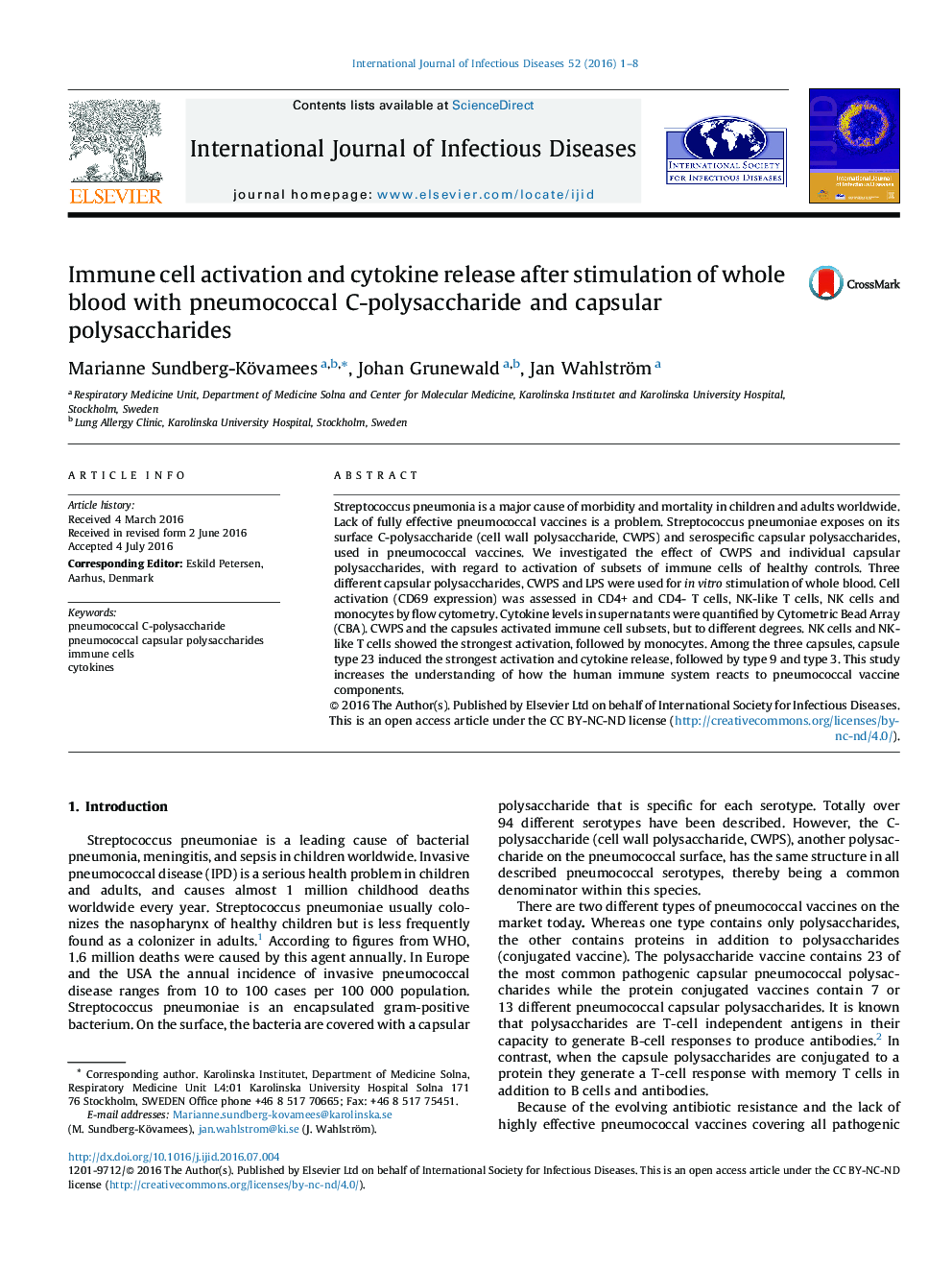| Article ID | Journal | Published Year | Pages | File Type |
|---|---|---|---|---|
| 5667406 | International Journal of Infectious Diseases | 2016 | 8 Pages |
â¢CWPS and the three pneumococcal capsular polysaccharides tested (type 3, type 9 and type 23) activated all leukocyte cell types tested but to different degrees.â¢After stimulation, the highest relative MFI values of CD69 were observed for NK cells followed by CD56+ T cells, monocytes, CD4- T cells and finally CD4+ T cells.â¢Stimulation with CWPS, type 3, type 9 and type 23 capsules induced the release of cytokines IL-8, TNF, IL-10 and IFNγ, compared to unstimulated cells.â¢Capsule type 23 induced the strongest CD69 expression and the highest cytokine release followed by type 9 and type 3.
Streptococcus pneumonia is a major cause of morbidity and mortality in children and adults worldwide. Lack of fully effective pneumococcal vaccines is a problem. Streptococcus pneumoniae exposes on its surface C-polysaccharide (cell wall polysaccharide, CWPS) and serospecific capsular polysaccharides, used in pneumococcal vaccines. We investigated the effect of CWPS and individual capsular polysaccharides, with regard to activation of subsets of immune cells of healthy controls. Three different capsular polysaccharides, CWPS and LPS were used for in vitro stimulation of whole blood. Cell activation (CD69 expression) was assessed in CD4+ and CD4- T cells, NK-like T cells, NK cells and monocytes by flow cytometry. Cytokine levels in supernatants were quantified by Cytometric Bead Array (CBA). CWPS and the capsules activated immune cell subsets, but to different degrees. NK cells and NK-like T cells showed the strongest activation, followed by monocytes. Among the three capsules, capsule type 23 induced the strongest activation and cytokine release, followed by type 9 and type 3. This study increases the understanding of how the human immune system reacts to pneumococcal vaccine components.
